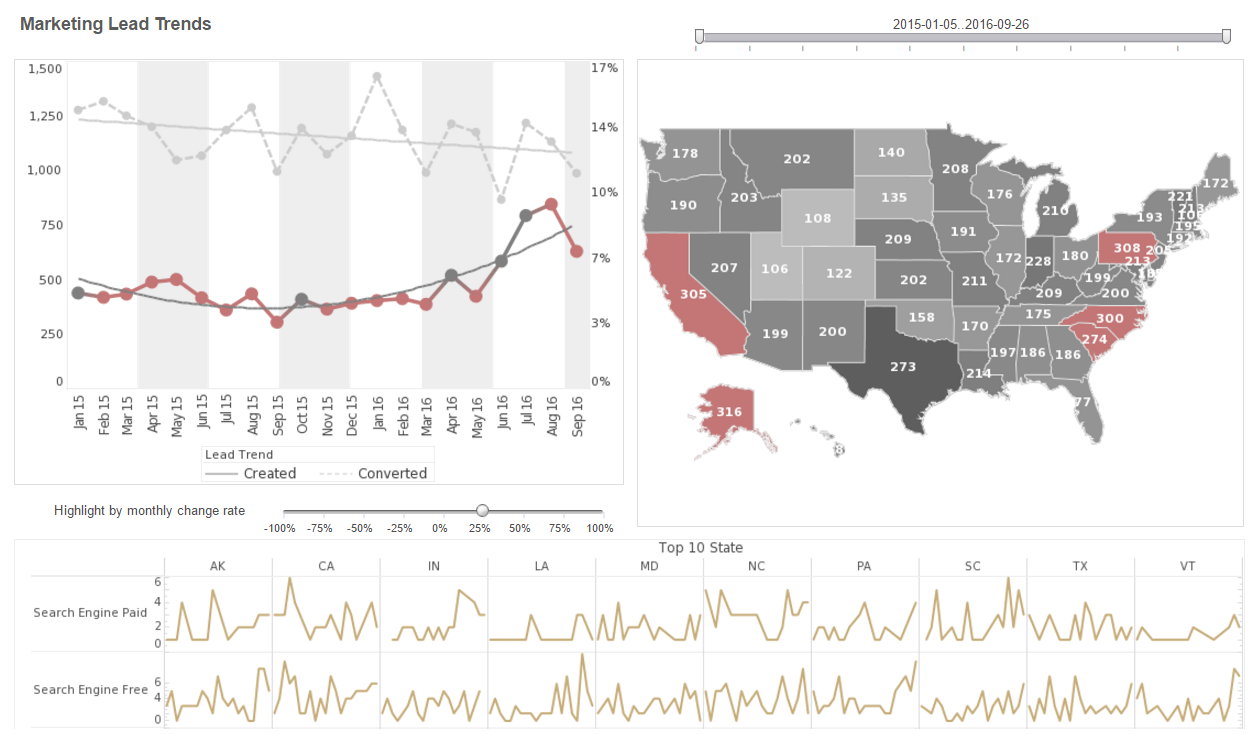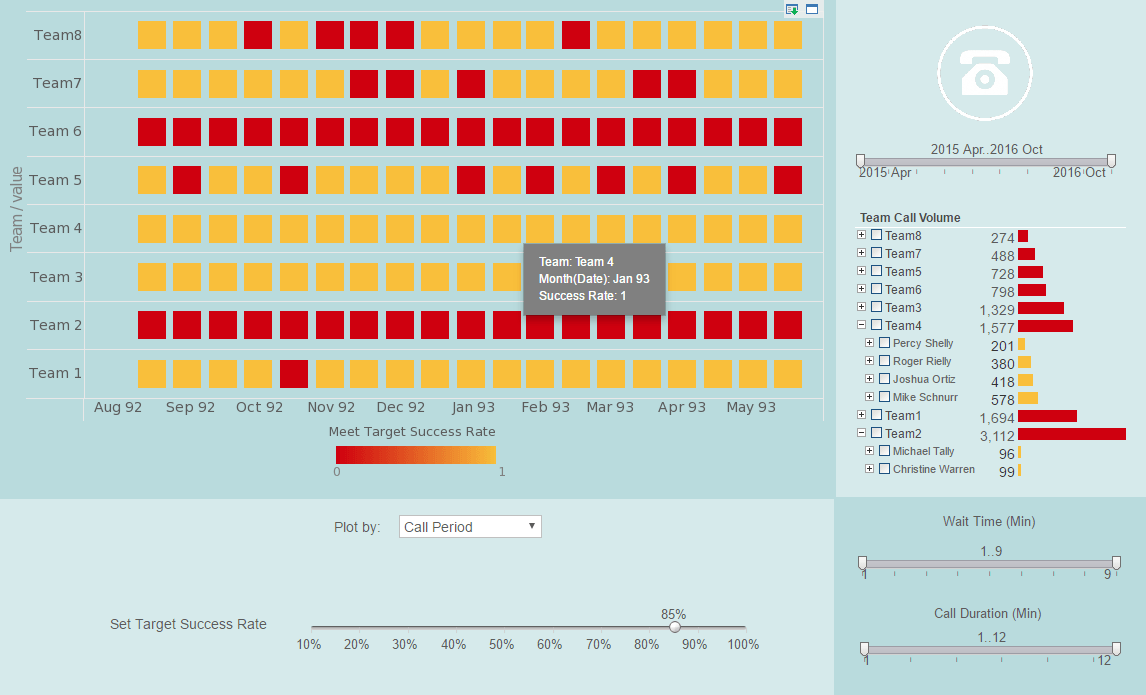Why InetSoft?
InetSoft's business dashboard tool is easy enough to be:- Deployed in just weeks
- Learned by end users with minimal training
- Used by any executive without the aid of IT
- Adaptable to changing data and business needs
- Used for data exploration through visualization
- Capable of maximum self-service
- Attract the attention of executives
- Meet the demands of power users
- Scale up for organizations of any size
Evaluate Style Scope from InetSoft. It's Easy. Agile. & Robust.
Register for more info and to download free eval software
About InetSoft
Since 1996 InetSoft has been delivering easy, agile, and robust business intelligence software that makes it possible for organizations and solution providers of all sizes to deploy or embed full-featured business intelligence solutions. Application highlights include visually-compelling and interactive dashboards that ensure greater end-user adoption plus pixel-perfect report generation, scheduling, and bursting. InetSoft's patent pending Data Block™ technology enables productive reuse of queries and a unique capability for end-user defined data mashup.
This capability combined with efficient information access enabled by InetSoft's visual analysis technologies allows maximum self-service that benefits the average business user, the IT administrator, and the developer. InetSoft was rated #1 in Butler Analytics Business Analytics Yearbook, and InetSoft's BI solutions have been deployed at over 5,000 organizations worldwide, including 25% of Fortune 500 companies, spanning all types of industries.

What KPIs Does a Grocery Store Manager Track on a Dashboard?
A grocery store manager relies on a variety of key performance indicators (KPIs) to monitor and assess the store's performance, make informed decisions, and drive operational efficiency. These KPIs are often tracked on a dashboard for quick and easy access to real-time data. Here are some common KPIs that a grocery store manager might track on a dashboard:
-
Sales Revenue: Total revenue generated from the sale of groceries, including perishable and non-perishable items, fresh produce, and specialty products. Tracking sales revenue helps assess overall store performance and identify trends in customer purchasing behavior.
-
Sales Growth: The percentage increase or decrease in sales revenue compared to the same period in the previous year. Monitoring sales growth helps assess the effectiveness of marketing efforts, promotions, and product offerings in driving revenue growth.
-
Basket Size: The average number of items purchased per transaction, also known as the average transaction size. Analyzing basket size helps understand customer shopping behavior and preferences and optimize product placement and promotions to increase basket size.
-
Inventory Turnover Ratio: The number of times inventory is sold and replaced within a specific period. A high inventory turnover ratio indicates efficient inventory management and minimizes the risk of overstocking or understocking.
-
Gross Profit Margin: The percentage of revenue that exceeds the cost of goods sold (COGS). Monitoring gross profit margin helps assess profitability and pricing strategies and identify opportunities to optimize margins through cost control and pricing adjustments.
-
Customer Traffic: The number of customers entering the store during specific time periods, such as hours of operation or peak shopping times. Tracking customer traffic helps optimize staffing levels, manage queues, and improve customer service and satisfaction.
-
Promotional Effectiveness: The impact of promotional campaigns and discounts on sales revenue and customer behavior. Analyzing promotional effectiveness helps evaluate the return on investment (ROI) of marketing initiatives and optimize promotional strategies to drive sales and customer engagement.
-
Shrinkage Rate: The percentage of inventory lost or unaccounted for due to theft, damage, errors, or other causes. Monitoring shrinkage helps identify areas of risk and implement loss prevention measures to minimize inventory losses and improve profitability.
-
Employee Productivity: Key metrics related to employee performance, such as sales per hour, units per transaction, and customer satisfaction scores. Tracking employee productivity helps optimize staffing levels, identify training needs, and improve overall store operations.
-
Customer Satisfaction Scores: Customer satisfaction scores, measured through surveys, feedback forms, or online reviews. High customer satisfaction scores indicate satisfied customers who are likely to return and recommend the store to others.
More Articles About Dashboards
Balance Scorecard Use Perspectives - I use what are called the balance scorecard use perspectives. I use what I call service areas. Service areas are really just natural grouping of services. It could be chronological or sequential, whatever makes sense to you and your organization, but the idea, folks, we are not reorganizing. We’re not rewriting your org chart. We are creating a framework for you to begin to see performance dependencies as they emerge...
Boosting BI Dashboard Performance - The best method for boosting Dashboard performance is to create a materialized view. A materialized view is a caching strategy that pre-aggregates and stores the data required by a Dashboard so that the Dashboard can respond more quickly at runtime...
Construction Resource Utilization and Allocation - In large-scale building projects, when labor, materials, and equipment are essential, resource efficiency is crucial. This area of analytics offers a thorough rundown of resource management. Important measurements consist of: Equipment Downtime: By keeping track of how long heavy equipment is idle for repairs or maintenance, preventative maintenance may be scheduled and unplanned downtime can be minimized...
Warehouse Putaway KPI - Proper storing techniques are very important in every warehouse. If you don't manage it, the efficiency of the warehouse will be drastically affected. The cost will also increase a lot and you cannot control it. So, the inventory you receive must be stored appropriately, and measuring its performance is done by the Putaway KPI. The important KPIs in putaway are...




